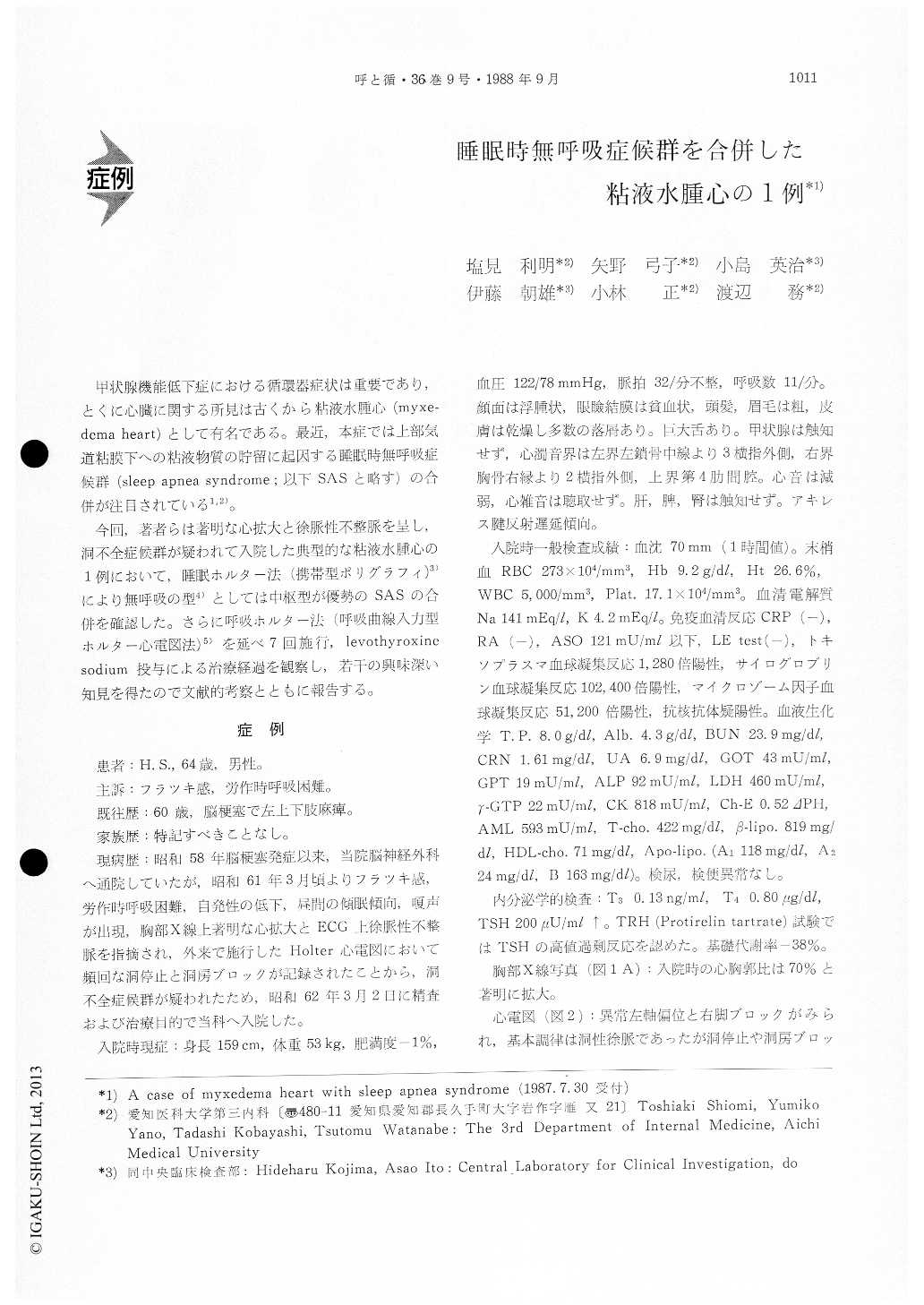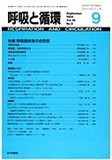Japanese
English
- 有料閲覧
- Abstract 文献概要
- 1ページ目 Look Inside
甲状腺機能低下症における循環器症状は重要であり,とくに心臓に関する所見は古くから粘液水腫心(myxe—dema heart)として有名である。最近,本症では上部気道粘膜下への粘液物質の貯留に起因する睡眠時無呼吸症候群(sleep apnea syndrome;以下SASと略す)の合併が注目されている1,2)。
今回,著者らは著明な心拡大と徐脈性不整脈を呈し,洞不全症候群が疑われて入院した典型的な粘液水腫心の1例において,睡眠ホルター法(携帯型ポリグラフィ)3)により無呼吸の型4)としては中枢型が優勢のSASの合併を確認した。さらに呼吸ホルター法(呼吸曲線入力型ホルター心電図法)5)を延べ7回施行,levothyroxinesodium投与による治療経過を観察し,若干の興味深い知見を得たので文献的考察とともに報告する。
A 64-year-old male with a typical myxedema heart in whom sick sinus syndrome had been suspectedbecause of remarkable bradyarrhythmias andcardi-omegaly was admitted. The pulse rate was32/min, the cardiothoracic ratio was 70%, and in the thyroid hormonal findings T3,T4 andTSH wereO. 13ng/ml, 0.80μg/dl and more than200μU/ml respectively. It was detected that he had the complication of sleep apnea syndrome (SAS) by means of the respi-ratory Holter's monitoring system (Res. Holter) and the sleeping Holter's monitoring system which we had devised as new convenient methods for the diagnosis of SAS. Prior to the oral administration of levothyroxine sodium, apnea index (AI) was 56.7, and the central type of sleep apnea was predominant. To observe the changes of bradyar-rhythmias and sleep apnea following its administra-tion, Res. Holter was performed seven times in this case. At the 3 rd week of its administration heart rate increased to 68/min, at the 5 th week AI decreased to 4. 9, and at the 7 th weekAI norma-lized to 2. 8. The reason why SAS was cured fol-lowing its administration is that so-called"giant tongue" and the obstruction of upper airway due to myxedema must have been recovered. If the causes of somnolence and bradycardia that are cha-racteristics of myxedema should be considered, one could not ignore the complication of SAS in future.

Copyright © 1988, Igaku-Shoin Ltd. All rights reserved.


